7.8 /10 1 Votes
78% GameFAQs Director(s) Manabu Yamana | 4.4/5 Google Play 7/10 IGN Producer(s) Yukinobu Chida Initial release date 9 December 1995 | |||||||||||||||||||||||||||||||||
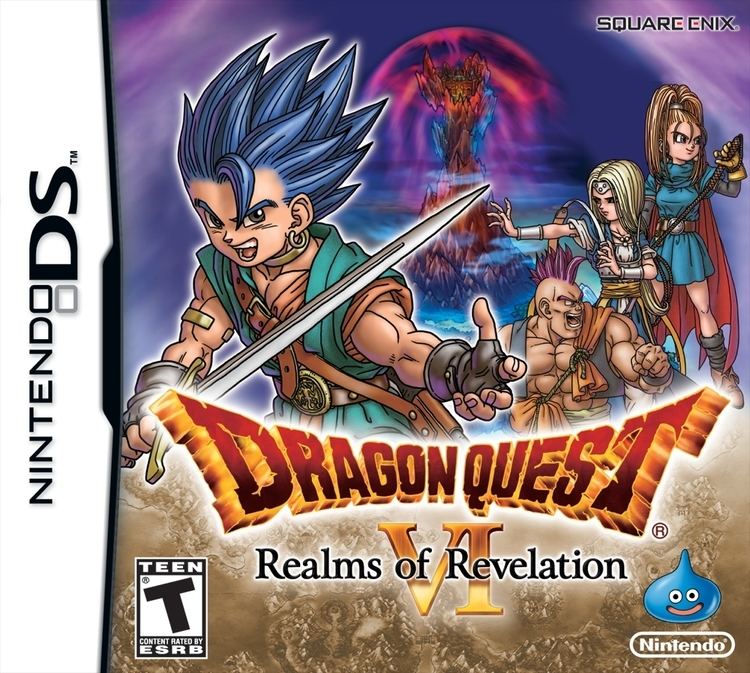 | ||||||||||||||||||||||||||||||||||
Publisher(s) Super FamicomJP: EnixNintendo DSJP: Square EnixNA: NintendoEU: NintendoAndroid, iOSSquare Enix Similar Dragon Quest games, Square Enix Holdings games, Role-playing video games | ||||||||||||||||||||||||||||||||||
Let s play dragon quest vi realms of revelation 01
Dragon Quest VI: Realms of Revelation is a role-playing video game developed by Heartbeat and published by Enix (now Square Enix) for the Super Famicom as a part of the Dragon Quest series and as the last Dragon Quest game in the Zenithia trilogy. It was released on December 9, 1995, in Japan, developed by Heartbeat; whereas the previous Dragon Quest games were developed by Chunsoft. In July 2007, Square Enix announced a series of remakes of Dragon Quest IV: Chapters of the Chosen, Dragon Quest V: Hand of the Heavenly Bride and Dragon Quest VI: Realms of Revelation for the Nintendo DS, making this the first time the game in question got released on other consoles and overseas. Like its predecessor, Dragon Quest VI was a Japan-only release as the larger ROMs needed for English dialog were cost-prohibitive (the game was already 32 megabits in size, the limit for SNES ROMs without using bank switching). In addition, the game's release occurred very late into the SNES's lifespan, by which time Enix had dropped support for the console outside Japan. The title was finally released overseas for the Nintendo DS in North America on February 14, 2011, and in Europe on May 20, 2011. A version of the game for Android and iOS was released in Japan on June 10, 2015, and worldwide in English on June 24, 2015.
Contents
- Let s play dragon quest vi realms of revelation 01
- Dragon quest vi video review
- Gameplay
- Setting
- Story
- Production
- Release
- Nintendo DS remake
- Soundtracks
- Manga
- Reception
- Sales
- References
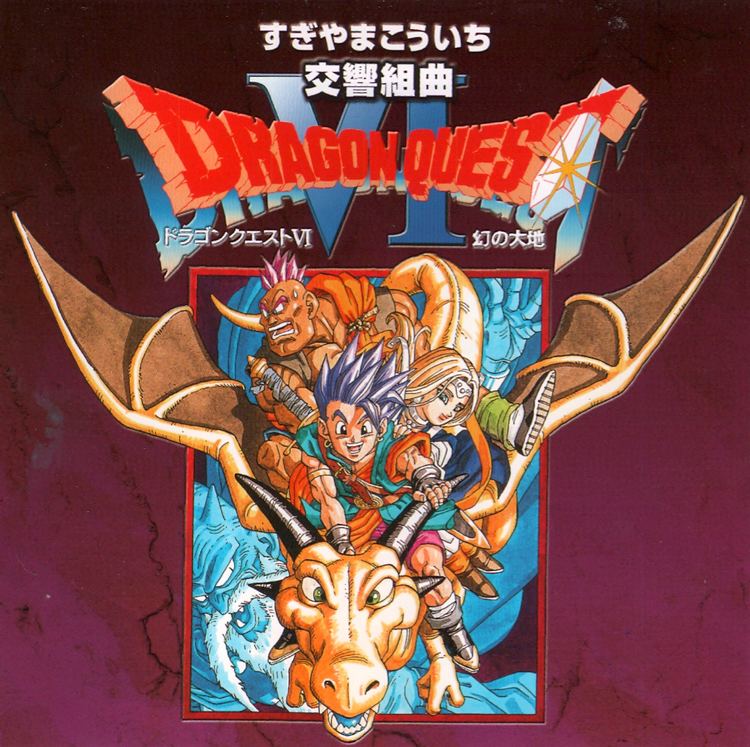
As the sixth installment to the Dragon Quest series, the graphics and gameplay remain close to the other games, with minor additions and upgrades. The graphics were vastly improved from Dragon Quest V: Hand of the Heavenly Bride, which was also for the SNES, but had rather unimpressive graphics due to being an early game on the console. Navigation remains largely unchanged from the previous games and the turn-based battles are still in first-person. The class system from Dragon Quest III returns, with minor adjustments. The large cartridge ROM used by the game resulted in an extremely high price of 11,970 yen (about 137 dollars), Dragon Quest VI sold 3.2 million copies in Japan, becoming the best selling game of 1995. The DS version sold an additional one million copies by March 2010.
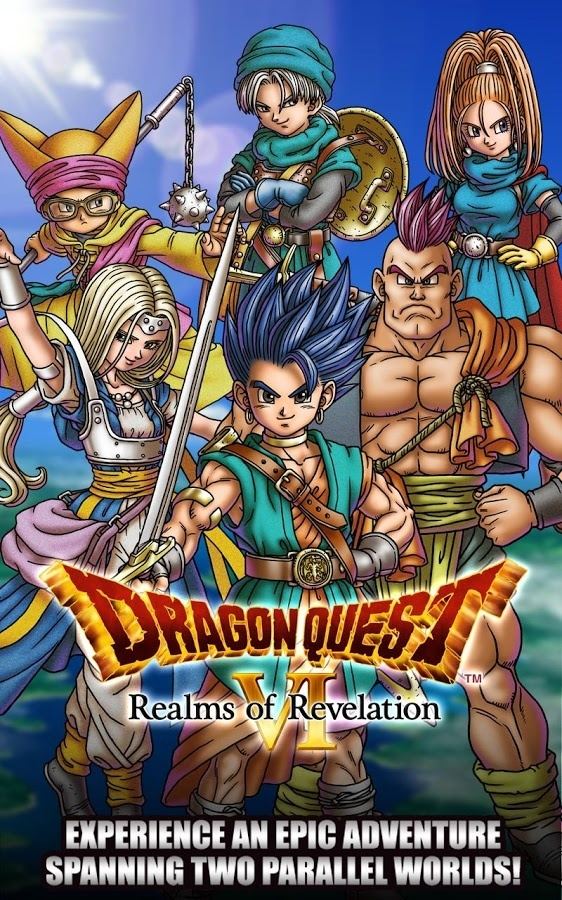
The story follows the traditional Dragon Quest "Hero" on a quest to save the world. In this particular installment, the heroes also have to endure the personal struggle of amnesia, as many of the main characters do not initially remember who they are. After completing a series of quests, the player learns that in addition to a Real World, there is also a Dream World, made up of people's dreams, and that there is a great evil that wants to conquer both. The Hero and his new party work together to save both worlds from the ever-growing threat.
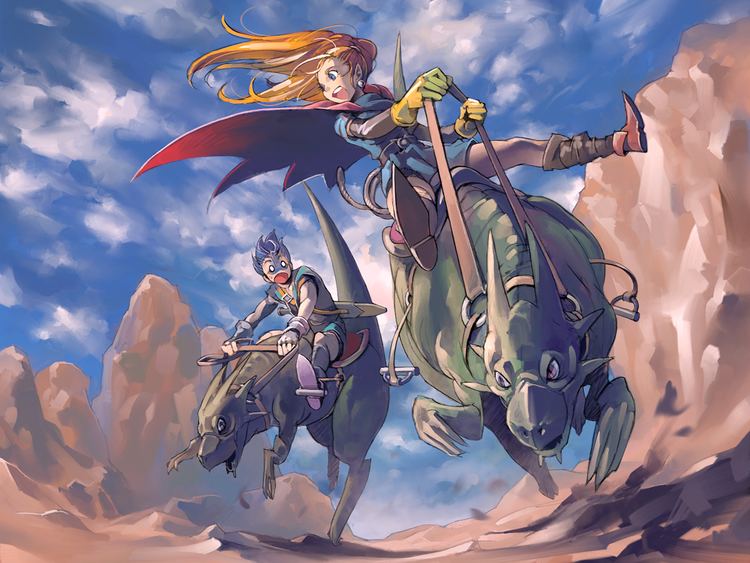
Dragon quest vi video review
Gameplay
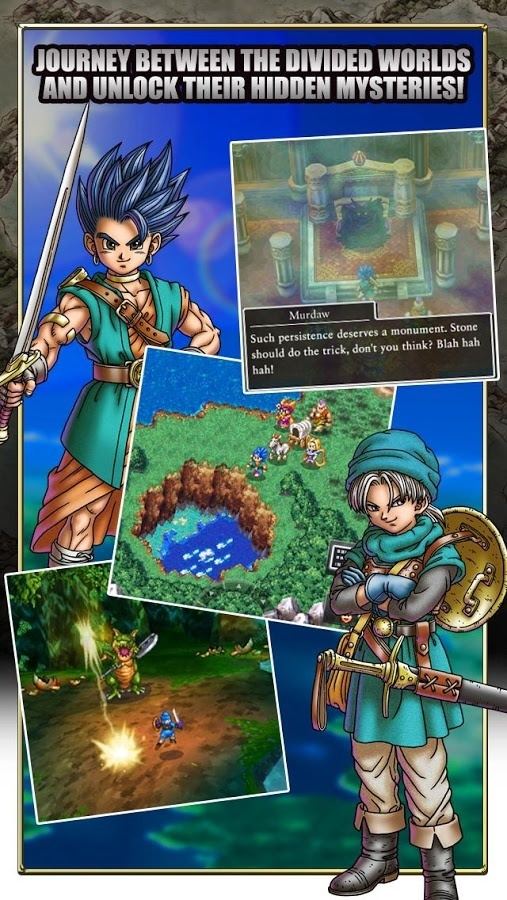
Dragon Quest VI is a traditional, turn-based role-playing video game (in an overhead perspective) which features random battles and a character class system that the Hero and his party members acquire new skills and spells. The Hero travels around the world gathering a party throughout his adventure. To progress in the story, the party must defeat specific boss monsters or trigger specific flags. In order to defeat the bosses, the player must spend time training the party by gaining experience points from battles to advance in character and class levels.
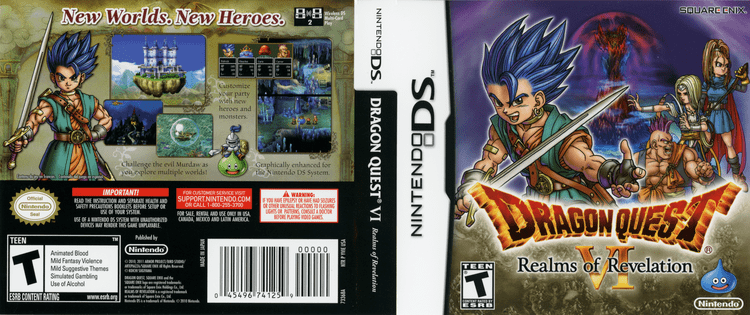
Other new features were added to the series, such as the monsters being animated when they attack. The Slime Arena and Best Dresser Contest were new mini-games introduced; the casinos return from previous Dragon Quest games. Like previous games, mini medals can be found hidden throughout the worlds and can be traded for items. There are bonus dungeons and a few extra characters after beating the main storyline. There is a day and night system, as in some previous installments; with certain storyline events happening at night. While the Monster Master class can catch monsters in the original Super Famicom version it is not a major part of the game. Another returning feature from the past two games is the use of the wagon, which allows characters to be swapped out for other ones on the world map.

This Dragon Quest, similar to Dragon Warrior III and Dragon Warrior VII, has a class system. Once the party gets to Alltrades Abbey, they have the option of becoming one of several starter classes. Each class has eight levels, which are gained by winning a specific number of battles (unlike character levels, which are gained by earning experience points), and advancing in level teaches a character new spells and / or skills, which are retained across class changes. Once a character has mastered a specific set of two or three starter classes, they can change into a hybrid class which builds on their themes; for example, mastering Warrior and Martial Artist unlocks the Gladiator Class, which learns powerful physical attacks, and mastering certain hybrid classes unlocks the Hero class. Some of the classes give special bonuses beyond their stats and abilities such as the Merchant who gives a small bonus to the party's income after every battle, or the Sage who receives a discount to MP costs. To master a class, the character must fight a set number of battles as that class. Once certain hybrid classes are mastered, a stat relating to that class will permanently go up. There are two secret classes as well, Dragon (Hackasaurus) and Liquid Metal Slime, which are unlockable through consumable books. Dragon Quest VI was the first game in the series to include abilities or skills (トクギ, tokugi) (special attacks and other techniques which are not spells and usually do not cost MP) for human party members. These special techniques were added to the remakes of III, IV and V later on.
Setting
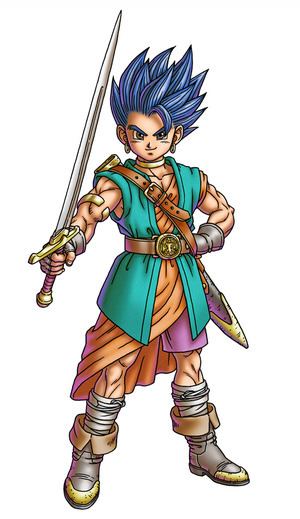
Like the other Dragon Quest games in the series, the setting of Dragon Quest VI is very medieval, complete with castles, knights, and magic. The main world is divided into the "Real World" and "Dream World", each with a separate, but similar map. To get from one world to the other, the party uses special warps (such as in wells), by ascending/descending stairs on the world map or falling through holes in the "Dream World" to the "Real World". If something cannot be found in the "Real World", it may appear in the "Dream World", such as with Spiegelspire, at the middle of the game.
Story
Dragon Quest VI opens as the Hero and his party of a mysterious woman and a bulky man approach Murdaw, the demon king’s castle. After the girl uses an ocarina to summon a dragon, the party enters the castle and comes face to face with Murdaw (Mudo"魔王ムドー" in Japanese version). Overpowering the trio, the demon king appears to destroy each member of the party, but suddenly, the Hero wakes up in the mountain town Weaver's Peak. Tania, a young woman from Weaver's Peak, insists that he was having a bad dream and introduces herself as his sister.
After getting off the bed, the Hero is then given a task to get a crown in preparation for the annual Mountain Spirit festival from the elder which takes him to Haggleton. However he finds out the man that is supposed to make the crown has gone out somewhere to the northwest of town and never came back. The hero then heads in that direction and finds a large hole with the crown maker just barely hanging on. The hero attempts to rescue him and succeeds but in the process, slips and falls to the world below. In this mysterious world, the hero finds a nearby town in which the townspeople cannot see him. The hero grabs a tip from one of the townspeople that there's a special well to the north which people went in never came back; thus the hero heads in that direction and returns to his world.
After getting the ceremonial crown from the crown maker for no charge after saving his life, the hero heads back to Weaver's Peak just in time for the festival to begin. During the festival, the hero receives a mysterious vision that a great evil was to take over the world and asks him to leave the village in preparation for this disaster. The next day, the hero finds out that the world that he stumbled onto was called the "Phantom World" and is given a pass by the elder which allows him entry into Somnia, where he can meet the king.
At Somnia, the hero meets Carver, which doesn't seem to remember the hero. The Hero then meets Captain Blade, leader of Somnia's military which gives the potential soldier candidates a task to find a special item in a tower. The hero manages to find this item successfully and formally becomes a soldier of Somnia. After a task which the Hero and Carver work together to get a horse for an old man, Carver also becomes a soldier of Somnia and himself and the hero are given permission to talk to the king where they learn to defeat Murdaw, they need the Mirror of Ra. The Hero and Carver discover another portal similar to the one near Haggleton, which eventually leads them to Port Haven, another town where they can not be seen. Milly, also appearing to have lost her memory, does see them and helps them become visible via Madame Luca's help.
The party discovers a Somnia Castle in the “Phantom World” and learns that the prince is missing and that the Hero looks like him. They also meet Captain Rusty, who bears a striking resemblance to Captain Blade. Gaining entrance to the Moonmirror Tower, the party meets Ashlynn, a woman who was invisible in the “Phantom World” at first, too, and together they find the Mirror of Ra. The four of them travel to Murdaw's castle, in the original world. After defeating Murdaw, the Hero uses the Mirror on him. Murdaw then turns into the King of Somnia, confused and unaware of what happened. The king reveals that the original world is in fact the Dream World and the Phantom World is the Real World. Upon traveling back to the Real World, the King of Somnia thanks the party for defeating Murdaw in his dreams, but that the real Murdaw lives and that the party must travel to Ghent to retrieve a boat to get to Murdaw's lair. In Ghent, Nevan, a healer, joins the party and allows them to use the Ghent Clan's ship. During the fight with the real Murdaw, the Hero gets is again sent back to Weaver's Peak. However, with the Mirror of Ra, the Hero warps back into the battle and defeats Murdaw.
The Queen of Somnia tells the Hero to discover who he really is. The quest leads the party to Arkbolt, where a terrible monster is blocking a nearby cave. The reward for defeating the monster is the famed Sunderbolt Blade, but before the party can strike the final blow, a warrior by the name of Terry kills the monster, winning the sword. After traveling both worlds, the party learns that Murdaw was not the only evil in the world, having fought several other monsters that all seem to be connected.
In Sorceria, the party learns that this is Ashlynn's home. The elders tell Ashlynn that the Demon Lord is watching her and give her the powerful spell Magic Burst to fight him. The party also learns that the only way to get to the Demon Lord is through Zenith Tower, but to activate the tower, they need to collect the sword, armor, shield, and helmet of legend. While doing so, the Hero meets his double in Real Weaver's Peak, who gets spooked, and speaks 'Y-You. Y-You're m-m-me!', and says that he must prove himself to be faithful to his family if he is to join powers. Returning to Real Somnia, the King and Queen tell the Hero that he is indeed the prince. When he fused with his clone, the Hero gained his memory back, much like Ashlynn and Carver had done.
The party reaches Cloudsgate Citadel and meets Dhuran(デュラン), who claims to have taken over the castle. He summons Terry to fight the party and then fights the party himself. Dhuran then reveals that all the enemies the party has faced were just pawns of Mortamor, the Archfiend. Milly reveals that Terry is her brother and Terry decides to join the party and fight against Mortamor.
Once Cloudsgate Citadel is back to normal, the party speaks to King Zenith who informs them of Mortamor's doings and how to reach the Dread Realm. Mortamor plans on merging both worlds. The party’s horse fuses with Pegasus, allowing the party to fly to the Dread Realm. Several challenges await in the Dread Realm, with one such challenge being the party's strength suddenly and unexpectedly plummeting. With the help of two Supreme Sage brothers, Benjamin and Isaac, the party enters Mortamor's Castle. After solving many puzzles, they come face to face with Mortamor and defeat him. Isaac reveals that the Dread Realm is falling apart and Pegasus helps them escape. After returning to the Real World, everyone parts ways, with Ashlynn having to return to the Dream World since her Real World self doesn't exist anymore. With Mortamor's link between the Real World and the Dream World severed, the Dream World vanishes, with only Cloudgate Castle being the remaining visible portion in the Real World. It's then shown that Ashlynn is in the castle, taking care of the newly hatched Zenithian Dragon.
Production
The scenario designer, as in all previous Dragon Quest games, was Yuji Horii. Similarly, the lead artist was Akira Toriyama and the sound was composed by Koichi Sugiyama. This is the last game in the series to feature the Tenkuu no Shiro (Castle in the Sky) trilogy.
A prequel, Dragon Warrior Monsters (Dragon Quest Monsters: Terry's Wonderland in Japan), was released in 1998. This game featured Terry and Milly years before the events of Dragon Quest VI. It was released in North America the next year, even though Dragon Quest VI was never released in North America. Along with Terry and Milly, several of the main enemies, including Mortamor, reappear, however, their previous roles have been eliminated, making them appear as just normal enemies. Mortamor and Murdaw (DeathMore and Mudou, respectively, in the localization) do appear as very challenging, very late in-game bosses, though.
Release
The initial release was delayed over a year because of Enix wanting to further develop their game. The game was eventually shown at Shoshinkai in November 1995. Dragon Quest VI was released a few weeks later on December 9, with the very steep price of 11,400 yen (roughly over 100 U.S. dollars). The game went on to sell over 3.2 million copies. In Japan, the game made the news in 2005, when a Japanese student threatened another student over an argument about which Dragon Quest is the best, the student doing the threatening favoring Dragon Quest VI.
Like its predecessor, Dragon Quest VI did not receive an English-language localization because of being cost-ineffective. At 4MB, it was one of the largest games made for the SNES as well as the largest the console could support without adding bank-switching circuitry to the cartridge, and translating it would have necessitated even bigger and more expensive ROMs. In addition, the game was a late release for the SNES and by the time an English localization could be finished, Enix had already dropped support for the console in North America and moved to the PlayStation.
Nintendo DS remake
The Dragon Quest VI enhanced remake for the Nintendo DS was announced in late 2007 by Square Enix and was developed by ArtePiazza. The game was released in Japan on January 28, 2010, in North America on February 14, 2011, and in Europe on May 20, 2011.
This version has a few differences
On April 28, 2008, it was reported that Square Enix has applied for the trademark "The Realms of Reverie" at the United States Patent and Trademark Office, leading to speculation that it was the localized title for this game. On May 20, 2008, Square Enix opened up the North American site featuring the three Dragon Quest DS remakes, acknowledging Realms of Reverie as the official subtitle, as well as confirming a release in North America. The title was later changed to "Realms of Revelation" just prior to release. Listings in some stores, including on price tags and the like, still use the "Reverie" title.
Mark Franklin, director of Public Relations at Nintendo, made the claim that Dragon Quest VI: Realms of Revelation “will give fans unique access to a classic game in the series for the first time” outside Japan.
Soundtracks
As with every Dragon Quest, Koichi Sugiyama composed the music and directed all the associated spinoffs. Three soundtracks were released for the music of Dragon Quest VI. The first was a two-disk soundtrack, which included an orchestral performance and an OST. The second soundtrack was released on August 23, 2000, and just had the orchestral version. This version was released by SPE Visual Works (now Aniplex), and was named Dragon Quest VI ~The Dream World~ Symphonic Suite. This version was featured on Dragon Quest Daizenshu Vol. 2, which is a compilation of Dragon Quest music. A second Symphonic Suite edition of the OST was performed in March 2005 and released on July 19, 2006, also by Aniplex. The Symphonic Suite track list is as follows:
All tracks written by Koichi Sugiyama.
Manga
A 10-volume manga adaptation of the game was also made, which titled Dragon Quest Maboroshi no Daichi (ドラゴンクエスト 幻の大地, lit. Dragon Quest: Land of Illusion). It was authored by Masaomi Kanzaki and published by Enix in the Monthly Shōnen Gangan between 1997 and 2001. The storyline roughly follows that of the video game from which it was based but with several differences, such as the inclusion of the character Kizu Buchi, a spotted slime.
Reception
Kurt Kalata of Gamasutra praised the game's storyline, particularly its innovative scenario. While comparable to the light-dark world setting of The Legend of Zelda: A Link to the Past, Dragon Quest VI featured a unique real world and dream world setting, which he suggests had an influence on the later Square role-playing games Chrono Cross and Final Fantasy X. Kalata also praised the gameplay improvements, including its class system that improves on Dragon Quest III and is now more similar to Final Fantasy V, and the addition of a bag that improves on the inventory management of previous games. He concludes that it is "still a fantastic game."
Sales
Despite the very high price of 11,970 yen (about 100 US dollars), Dragon Quest VI sold 3.2 million copies in Japan, of which 2.5 million were sold before the end of 1995 resulting in it becoming the best selling game of 1995. In 2010, Dragon Quest VI for the Nintendo DS sold almost a million copies in Japan in its first week. The game sold over 1.2 million copies by March 2010.
According to Nintendo Power, Dragon Quest VI was originally planned for North American release in the spring of 1996 under the title "Dragon Warrior V." However, the Super Nintendo localization of the game never happened, Enix having already given up on the U.S. market. Square, one of the only companies still willing to bring console role-playing video games to the United States, was also still struggling to get their games to sell in the United States, and therefore, Dragon Quest VI had no companies willing to take a risk for it. In Nintendo Power vol. 81, the staff wrote an article on Dragon Quest VI, hoping the game would find a North American release. They also suggested why the series might not appeal to the American audience: there is too much fighting and not enough adventuring. Other critics have mentioned that class building becomes tedious and that the dual worlds are too overwhelming, both possible reasons against a US release. Dragon Quest VI was listed as #7 among the 10 Best Japanese Games Never Released in the U.S. by GamePro magazine in their May 2005 issue.
